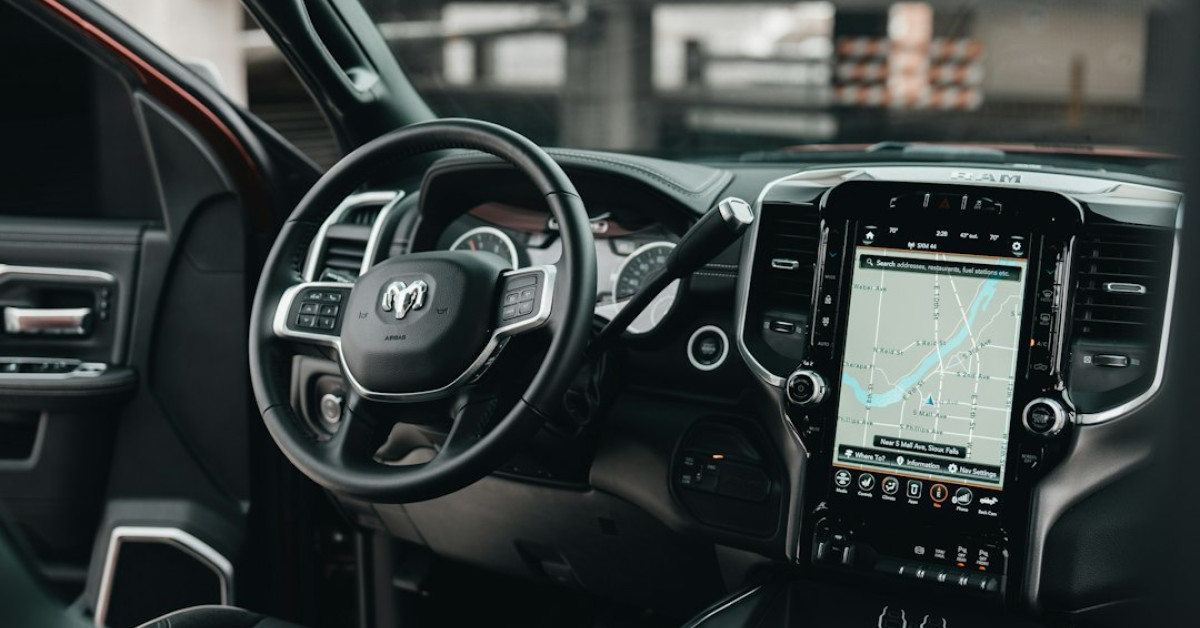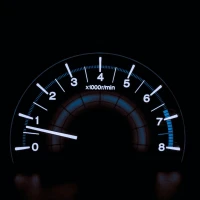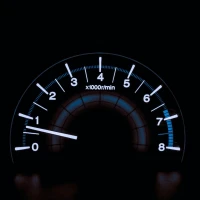In a world that’s always on the move, your car is more than just a vehicle – it’s the chariot that empowers your daily life. Whether it’s for a morning commute, a weekend getaway, or a last-minute dash to the grocery store, the importance of keeping your car running smoothly cannot be overstated. Understanding the needs of your car can extend its life, enhance its performance, and save you heaps of money in the long run. Embrace these top 15 expert car care tips to keep your car’s heart beating strong on the asphalt veins of the city.
1. Regular Oil Checks and Replacements
Maintaining proper oil levels and timely oil changes are the lifeblood of your car’s health. Lack of oil can lead to severe engine damage due to increased friction. Remember:
- Check your oil level at least once a month.
- Look for a golden-brown color; dark oil indicates it’s time for a change.
- Follow your manufacturer’s recommended oil change schedule, typically every 5,000 to 7,500 miles or as indicated by your vehicle’s oil life monitoring system.
Why It Makes a Difference
Regular oil maintenance ensures that your engine components are well-lubricated and working efficiently. This not only prevents wear and tear but also maintains your fuel economy.
2. Tire Maintenance: Pressure, Treads, and Rotation
Your tires are the only point of contact between your car and the road. Ensuring they are in good condition is essential for safety and vehicle handling.
- Check your tire pressure monthly; improper inflation can lead to tire failure and reduced fuel economy.
- Monitor for tire wear and ensure your tread depth is above the legally required minimum.
- Rotate your tires according to the manufacturer’s recommendation to even out tire wear and extend their lifespan.
The Impact on Your Drive
A set of well-maintained tires can greatly impact your car’s handling and braking effectiveness. It’s also an undeniable factor in enhancing fuel efficiency and overall driving safety.
3. Brake System Inspections
Brakes are a critical safety component and should be checked regularly for optimal performance.
- Listen for any unusual noises when braking, as these can be indicative of worn pads or discs.
- Have your brake fluid checked and replaced every 2 years or as per the manufacturer’s guidance.
- Inspect the brake system for signs of leaks or damage annually or at every service interval.
Safety First!
Well-maintained brakes not only ensure your safety but also protect other key components of your vehicle’s suspension and steering systems from unnecessary stress.
4. Cooling System Maintenance
The cooling system prevents engine overheating, a leading cause of vehicle breakdowns.
- Ensure your coolant level is checked regularly, especially before long trips.
- Have the system flushed and refilled as per your vehicle’s maintenance schedule.
- Inspect hoses and belts for cracking or soft spots, and have them replaced if necessary.
Preventing Engine Overheat
Regular maintenance of the cooling system helps maintain optimal engine temperature, preventing potential engine damage and saving you from costly repairs.
5. Transmission Care – Keep It Smooth
The transmission is vital for vehicle movement – keeping it in check is of utmost importance.
- Check your transmission fluid level, color, and smell regularly; burnt or discolored fluid signifies trouble.
- Have your vehicle serviced to your manufacturer’s transmission service schedule – usually every 30,000 miles.
- Be gentle with gear changes and avoid overloading your car to prevent unnecessary strain on the transmission.
Ensuring Seamless Performance
Proactive transmission maintenance helps to ensure smooth shifts, reliable performance, and can prevent costly repairs down the road.
6. Battery Health – The Ignition Key
Your car’s battery is the spark of life that powers every start.
- Regularly check your battery connections for corrosion, and clean them if required.
- Ensure that the battery is secured firmly and that there are no loose connections.
- Test your battery life during service checks, particularly as it reaches the 3-year mark.
The Power Behind the Start
A well-maintained battery guarantees that your car starts when you need it to and helps avoid the inconvenience of unexpected power failures.
7. Spark Plug Efficiency – Ignite Your Engine’s Potential
Spark plugs play an essential role in your engine’s combustion cycle.
- Replace your spark plugs based on your vehicle’s specifications, usually every 30,000 to 90,000 miles.
- Be on the lookout for a rough idle or difficulty starting your vehicle, signs that spark plugs might be failing.
- Keep in mind that high-quality spark plugs can improve performance and fuel efficiency.
Maximizing Your Engine’s Spark
Maintaining your spark plugs can result in a smoother running engine, better fuel consumption, and lower emissions.
8. Filter Replacements – The Breath of Life
Filters protect crucial parts of your vehicle from dust and debris.
- Change your air filter every 12,000 to 15,000 miles to ensure proper air flow to the engine.
- Replace your cabin air filter annually to maintain clean air inside your vehicle.
- Don’t ignore your fuel filter – replace it as recommended to prevent impurities from affecting your engine’s performance.
A Cleaner, Smoother Journey
Regular filter maintenance ensures that your engine and passengers breathe easily, contributing to a healthier car and a more pleasant driving experience.
9. Fluid Levels – The Circulatory System of Your Car
Keeping all fluid levels checked and topped up is crucial for your vehicle’s overall health.
- Regularly check your brake fluid, power steering fluid, and windshield washer fluid.
- Don’t forget about your differential and transfer case fluids, especially if you have an AWD or 4WD vehicle.
- Refer to your owner’s manual for the correct types of fluids, and change them as per the recommended schedules.
Driving With Adequate Fluids
Adequately maintained fluid levels will keep your car’s various systems running smoothly and prevent wear and tear from taking an early toll.
10. Timing and Serpentine Belt—The Pulse of the Machine
Belts are critical to the functioning of many engine components, and a failure can lead to catastrophic damage.
- Know the replacement interval for your timing belt – usually between 60,000 and 100,000 miles – and have it replaced by a professional.
- Inspect the serpentine belt for cracks or fraying, and replace it as needed, typically around the same interval as the timing belt.
- Be attentive to any squealing noises upon starting the engine or during operation; this could be a sign of a slip or alignment issue with the belts.
Keeping the Engine in Sync
Timely belt maintenance prevents unexpected and costly engine damage, keeping the heart of your vehicle pulsing with energy and precision.
11. Lighting and Electrical Systems – The Veins of Visibility
Ensure that all your vehicle’s lights and electrical systems are functioning correctly for optimal visibility and safety.
- Regularly check headlights, taillights, signals, and brake lights for functionality.
- Keep the contact points clean and free from corrosion.
- Consider upgrading to longer-lasting bulbs to reduce the frequency of replacements.
Shining Light on Safety
Proper lighting and electrical system maintenance ensure you can both see and be seen, reducing the risk of accidents due to visibility issues.
12. Exhaust System Checks – The Outlet for Performance
The exhaust system is key to directing hazardous fumes away from the vehicle and to ensuring engine performance and efficiency.
- Listen for unusual noises or a louder exhaust sound, which can indicate leaks or damage.
- Perform regular visual inspections for rust or holes, especially if you live in a region with harsh weather conditions.
- Ensure your emissions are within regulatory standards for environmental and legal compliance.
The Sound and the Fury
A well-maintained exhaust system not only keeps the environment cleaner but also maintains the performance and efficiency of your engine.
13. Suspension and Steering Maintenance
The suspension and steering systems are crucial for smooth driving and control.
- Inspect shocks and struts for leaks or damage; signs of poor performance include a bouncy ride or uneven tire wear.
- Keep power steering fluid at optimal levels and check for fluid leaks.
- Regularly have your alignment checked to ensure your vehicle’s stability and minimize tire wear.
Keeping Control
Ensuring a robust suspension and steering system allows for a more comfortable drive and maintains the longevity of your tires and the overall stability of your vehicle.
14. Wiper Blade Efficiency — Clear Vision for Safe Driving
Windshield wipers are essential for maintaining visibility during inclement weather.
- Replace your wiper blades at least once a year or sooner if they begin to leave streaks.
- Clean your wiper blades regularly with a damp cloth to remove debris.
- During winter, opt for blades designed for icy conditions for improved performance.
The Clear Choice for Safety
Effective wiper blades are crucial for safety during adverse weather conditions, allowing for clear visibility and reducing the likelihood of accidents.
15. Habit and Storage – The Human Element
Protecting your car also involves your driving habits and how you treat your vehicle when not in use.
- Avoid aggressive driving; rapid acceleration and hard braking can cause excessive wear.
- Lighten your load; heavy vehicles work harder, which can lead to premature wear.
- When storing your vehicle, such as during winter months, ensure it is in a sheltered area and that it is properly prepped to avoid any damage during inactivity.
The Driver’s Influence on Longevity
The way you handle your car and the environments in which you keep it can significantly affect its lifespan and the need for repairs.
The road to maintaining a vehicle in peak condition is paved with diligence, knowledge, and regular care. By embedding these 15 expert car care tips into your maintenance routine, you can keep your car running like a dream for miles upon miles. Not only will you enjoy a more reliable and efficient ride, but you’ll also save a fortune on potential repair costs. Care for your car, and it will care for you – through every journey and every season. Remember, regular care is the most cost-effective form of maintenance, ensuring you and your beloved vehicle have a long, smooth road ahead.










